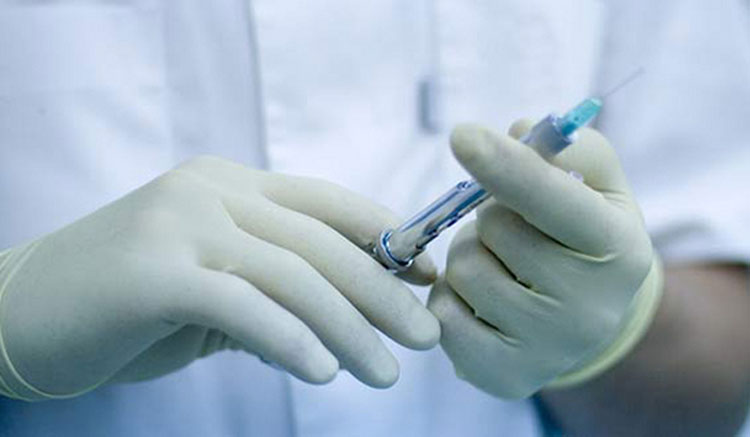Top 10 Leading Causes of Death
Intro

While some might harbor fears of dying from a lightning strike or shark attack, the cause of your ultimate demise is likely to be much less conspicuous.
Here are the top 10 leading causes of death in the United States, according to the Centers for Disease Control and Prevention. The data are based on deaths in 2013, the most recent year for which statistics are available.
Suicide

Suicide, or intentional self-harm, was the 10th leading cause of death overall in the United States in 2013, accounting for 41,149 deaths. However, suicide is the second leading cause of death for people ages 15 to 24, and people ages 25 to 34. Men are about four times more likely than women to die from suicide, according to the CDC. One strategy to prevent suicide is to learn the warning signs, which can include people talking about wanting to hurt themselves, increasing substance use and having changes in their mood, diet, or sleeping patterns, the CDC says. The National Suicide Prevention Lifeline at 1-800-273-TALK (1-800-273-8255).
Kidney disorders

Kidney disorders including nephritis, nephrotic syndrome, and nephrosis were responsible for 47,112 deaths in 2013. Nephritis is an inflammation of the kidneys that can be caused by infection or an allergic reaction to a drug. Nephrotic syndrome is characterized by a buildup of protein in the urine. Among the causes of the condition are: infection, response to drugs, cancer, immune disorders, diabetes or lupus. Nephrosis is damage to the kidneys that can be caused by pain medication, or chronic conditions such as diabetes, lupus or high blood pressure.
Influenza and pneumonia

Influenza and pneumonia killed 56,979 people in 2013. Influenza, or the flu , is a respiratory illness caused by a virus. The old, the young and pregnant women are particularly at risk for complications from the flu, according to the CDC. A seasonal flu shot can help prevent infection.
Pneumonia occurs when viruses or bacteria in the lungs cause an infection. Those older than 65 or younger than 5 are at high risk of catching the disease. Vaccination with the flu, pneumococcal, pertussis measles, varicella and Haemophilus influenzae type b vaccines may help prevent infection, according to the CDC. Following good hygiene practices also reduces the risk.
Diabetes

Diabetes accounted for 75,578 deaths in 2013. The condition is characterized by abnormally high blood sugar levels, and can lead to kidney failure, blindness, heart disease and amputations of the lower extremities, such as the feet. Risk factors include obesity, old age, a family history of diabetes and not exercising, according to the CDC. Regular exercise and maintaining a healthy weight can reduce the risk of developing the disease.
Get the world’s most fascinating discoveries delivered straight to your inbox.
Alzheimer's disease

Alzheimer's disease killed 84,767 people in 2013. The condition is the most common form of dementia in older adults, according to the CDC. The disease is characterized by problems with memory, language and thinking and can make it difficult to carry out daily activities.
Alzheimer's typically begins around age 60, and the risk of the disease increases with age. Those with a family history of Alzheimer's or specific genetic traits are at risk for the condition. Reducing head trauma, keeping a healthy heart and maintaining a healthy weight may reduce your risk of the disease, according to the Alzheimer's Association.
Stroke

Stroke accounted for 128,978 deaths in 2013. A stroke occurs when the blood supply to an area of the brain is obstructed, causing brain cells to die, or when a brain blood vessel bursts, according to the CDC. It can lead to paralysis, speech difficulties and death.
Risk factors include high blood pressure, high cholesterol, heart disease, diabetes, being overweight or obese, drinking excessive amounts of alcohol and smoking. Men have a greater risk of stroke than women. Eating a healthy diet, exercising and maintain a healthy weight are activities that can reduce stroke risk, according to the CDC.
Accidents

Accidents, or unintentional injuries, accounted for 130,557 deaths in 2013. Within this category, the most significant killers were car accidents , which caused 33,804 deaths; falls, which lead to 30,208 deaths; and unintentional poisonings, which killed 38,851 people.
Though accidents were the No. 4 cause of death among all age groups, they were the leading cause of death for people ages 1 to 44 years old.
Chronic lower respiratory diseases

Chronic lower respiratory diseases, a group of diseases that affect the airways and lungs, were responsible for 149,205 deaths in 2013. The most lethal chronic lower respiratory disease is chronic obstructive pulmonary disease (COPD ), which includes chronic bronchitis and emphysema. Chronic bronchitis is characterized by swollen and narrow airways inside the lung while emphysema is caused by damaged lung air sacs. Both these conditions make breathing difficult.
Smoking is the main culprit behind COPD. Men who smoke are 12 times more likely to die of COPD than men who have never smoked, according to the CDC, and avoiding smoking and secondhand smoke can reduce the risk of this condition.
Cancer

Cancer of all types was responsible for the deaths of more than 584,881 people in 2013. Cancer refers to uncontrolled cellular growth, which can occur in many different tissue types. The most common cancers in men are prostate cancer, lung cancer and colorectal cancer, according to the CDC. The most common cancers in women are breast cancer , followed by lung and colorectal cancer. Lung cancer causes the most deaths among men and women, followed in women by breast cancer.
A combination of hereditary and lifestyle factors likely contribute to a person's cancer risk. Quitting smoking may reduce the risk of several types of cancer , including lung and kidney cancer, according to the National Cancer Institute. There is also evidence that a diet rich in fruit and non-starchy vegetables may reduce the risk of mouth, esophagus and stomach cancers. Obesity has been linked to an increased risk of several cancers, including colorectal and endometrial cancer.
Heart disease

Heart disease was the No. 1 cause of death in the United States in 2013. It claimed 611,105 lives, about a quarter of all deaths in the United States. A number of conditions fall into the category of "heart disease," including coronary artery disease the most common type of heart disease and problems with heart rhythm. Risk factors include obesity , smoking, high blood pressure , diabetes and high cholesterol, according to the CDC, and lowering your cholesterol and blood pressure may reduce your risk of dying from heart disease.

Rachael is a Live Science contributor, and was a former channel editor and senior writer for Live Science between 2010 and 2022. She has a master's degree in journalism from New York University's Science, Health and Environmental Reporting Program. She also holds a B.S. in molecular biology and an M.S. in biology from the University of California, San Diego. Her work has appeared in Scienceline, The Washington Post and Scientific American.


